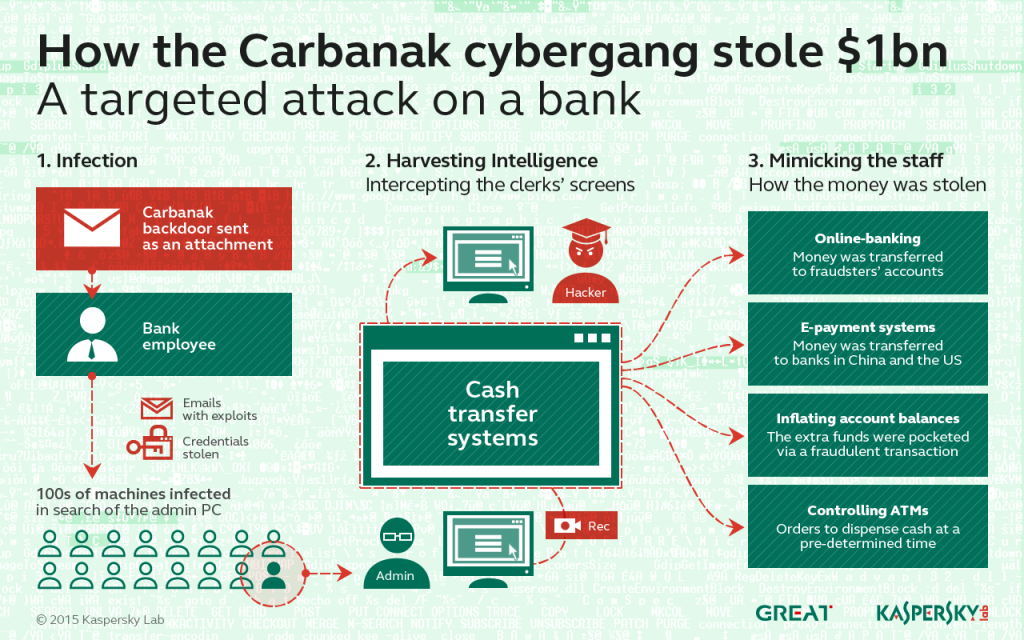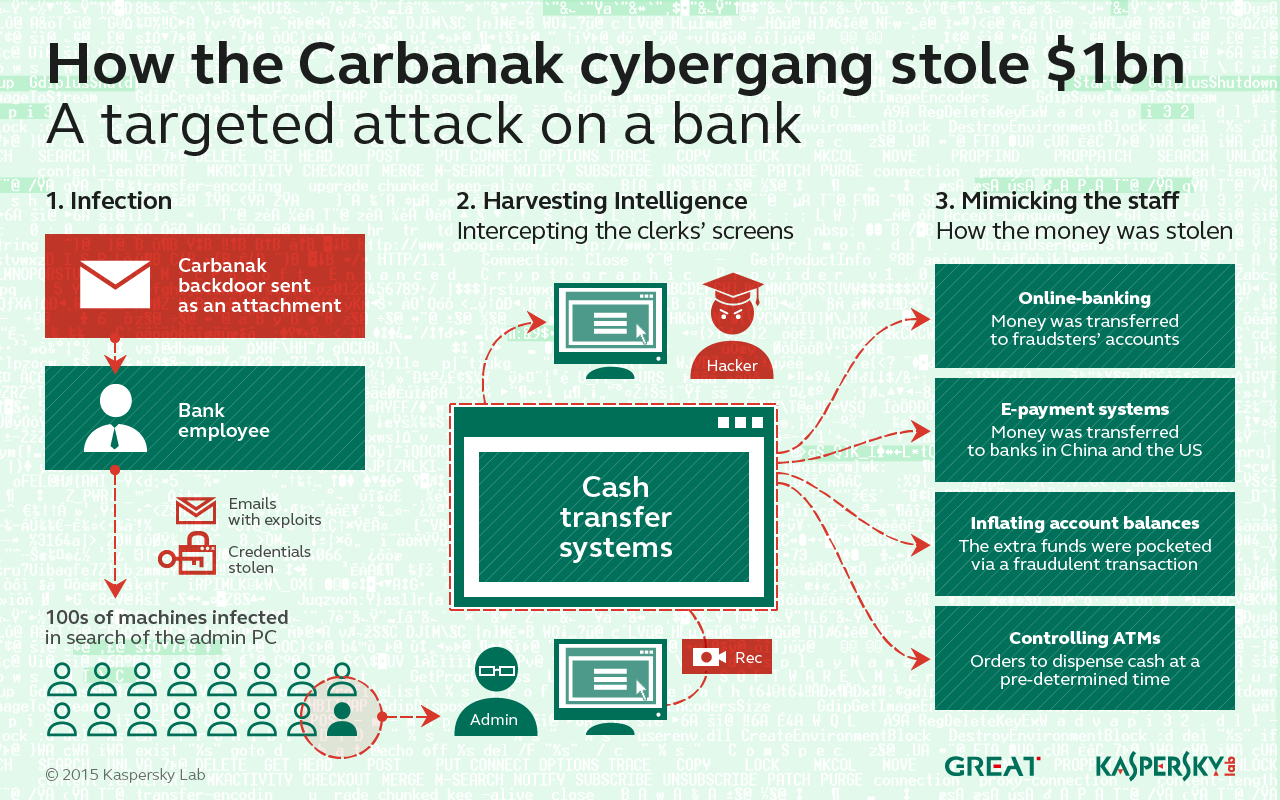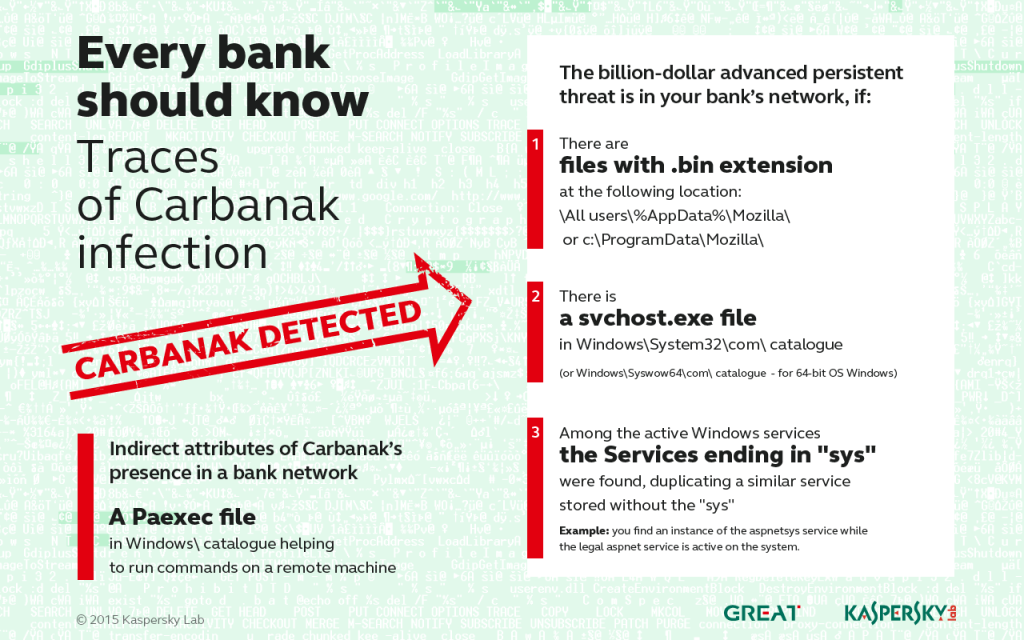A gang of cybercriminals have stolen up to US$1 billion in about two years from financial institutions worldwide, according to Kaspersky Lab which worked with INTERPOL, Europol and authorities from different countries to uncover the criminal plot behind an unprecedented cyberrobbery.
The experts report that responsibility for the robbery rests with a multinational gang of cybercriminals from Russia, Ukraine and other parts of Europe, as well as from China.
The Carbanak criminal gang responsible for the cyberrobbery used techniques drawn from the arsenal of targeted attacks.
The plot marks the beginning of a new stage in the evolution of cybercriminal activity, where malicious users steal money directly from banks, and avoid targeting end users.
Since 2013, the criminals have attempted to attack up to 100 banks, e-payment systems and other financial institutions in around 30 countries.

The attacks remain active. According to Kaspersky Lab data, the Carbanak targets included financial organizations in Russia, USA, Germany, China, Ukraine, Canada, Hong Kong, Taiwan, Romania, France, Spain, Norway, India, the UK, Poland, Pakistan, Nepal, Morocco, Iceland, Ireland, Czech Republic, Switzerland, Brazil, Bulgaria, and Australia.
It is estimated that the largest sums were grabbed by hacking into banks and stealing up to ten million dollars in each raid.
On average, each bank robbery took between two and four months, from infecting the first computer at the bank’s corporate network to making off with the stolen money.
The cybercriminals began by gaining entry into an employee’s computer through spear phishing, infecting the victim with the Carbanak malware.
They were then able to jump into the internal network and track down administrators’ computers for video surveillance. This allowed them to see and record everything that happened on the screens of staff who serviced the cash transfer systems.
In this way the fraudsters got to know every last detail of the bank clerks’ work and were able to mimic staff activity in order to transfer money and cash out.
How the money was stolen
When the time came to cash in on their activities, the fraudsters used online banking or international e-payment systems to transfer money from the banks’ accounts to their own. In the second case the stolen money was deposited with banks in China or America. The experts do not rule out the possibility that other banks in other countries were used as receivers.
In other cases cybercriminals penetrated right into the very heart of the accounting systems, inflating account balances before pocketing the extra funds via a fraudulent transaction. For example: if an account has 1,000 dollars, the criminals change its value so it has 10,000 dollars and then transfer 9,000 to themselves. The account holder doesn’t suspect a problem because the original 1,000 dollars are still there.
In addition, the cyberthieves seized control of banks’ ATMs and ordered them to dispense cash at a pre-determined time. When the payment was due, one of the gang’s henchmen was waiting beside the machine to collect the ‘voluntary’ payment.




















































































































